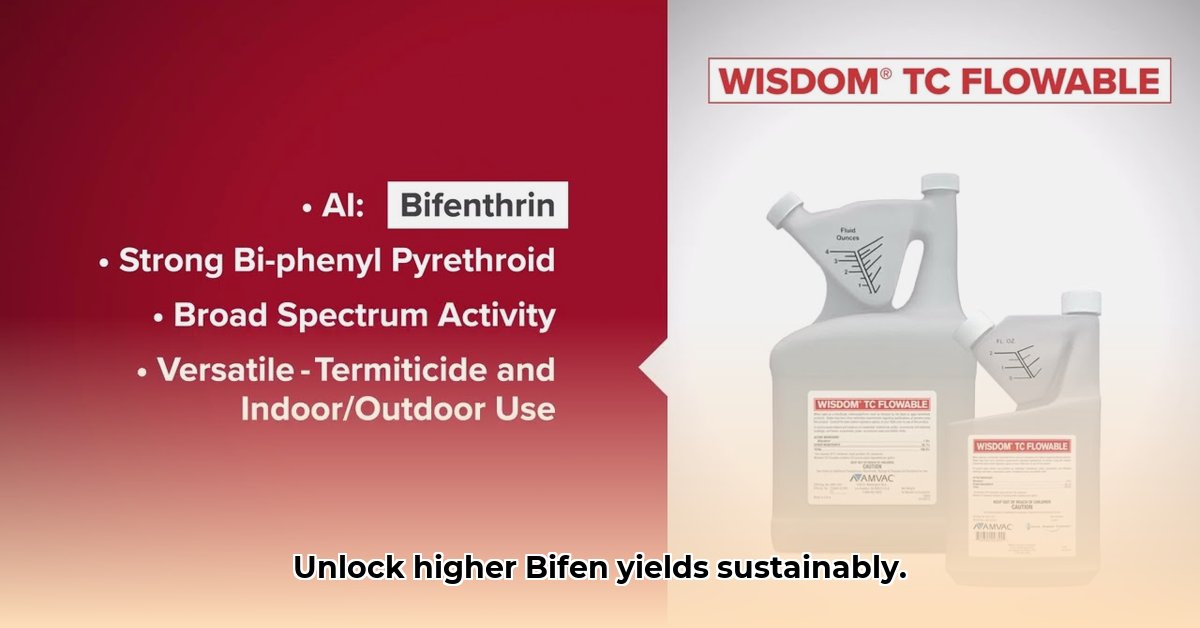
Tractor Supply Bifen: A Sustainable Approach to Pest Management
Dealing with pests is a farmer's constant challenge. Conventional pesticides, while effective, often carry hefty environmental costs and can harm beneficial insects. This guide explores how to responsibly incorporate Tractor Supply Bifen (containing bifenthrin, a pyrethroid insecticide) into a sustainable Integrated Pest Management (IPM) strategy – maximizing yields while minimizing environmental impact. But before we delve into Bifen's use, let's establish a foundational understanding of IPM. For more information on other Tractor Supply products, check out this helpful resource: Tractor Supply Products.
Understanding Integrated Pest Management (IPM): A Holistic Strategy
IPM isn't about eradicating every pest; it's about managing pest populations to prevent them from causing significant crop damage. It’s a balanced approach, prioritizing prevention and utilizing a variety of control methods. Think of it like gardening – you want to encourage the "good guys" (beneficial insects) while keeping the "bad guys" (harmful pests) in check. This reduces the need for intensive pesticide use and promotes a healthier environment. So, what does this look like in practice?
Implementing IPM: A Step-by-Step Guide
Effective IPM requires a multi-pronged approach. Bifen should only be used as a last resort, after exploring non-chemical options.
1. Know Your Enemy: Pest Identification: Accurately identifying your pests is crucial. A misidentification can lead to ineffective treatments or harm beneficial insects. Consult local resources or agricultural experts for assistance.
2. Monitor Pest Populations: Regularly inspect your crops for signs of pests. Early detection allows for less aggressive interventions. This helps you avoid unnecessary pesticide applications. How often should you monitor? That depends on the crop and the potential pests, but frequent checks are essential.
3. Non-Chemical Methods First: Cultural Controls: Before resorting to chemicals, explore cultural controls. This includes techniques like crop rotation, adjusting planting times, using pest-resistant varieties, and utilizing physical barriers (such as netting). These methods often provide effective pest management with minimal environmental impact.
4. Biological Controls: Nature’s Helpers: Introduce beneficial insects or nematodes that prey on your target pests. This approach utilizes nature's own pest control mechanisms, minimizing the need for synthetic pesticides. What beneficial insects are effective in your region? Research local options tailored to your specific pest problems.
5. Targeted Bifen Application (Last Resort): Use Tractor Supply Bifen only when other methods fail and pest populations threaten significant crop loss. Always follow label instructions meticulously, paying close attention to application rates, timing, and safety precautions. Remember: Bifen is a potent tool, and misuse can have environmental consequences.
6. Post-Application Monitoring & Evaluation: After applying Bifen, continue monitoring pest populations and crop health. Did the treatment work as intended? Did it have any unintended consequences? Continuous monitoring helps refine your IPM strategy over time. What metrics will you track to determine the treatment's effectiveness? Document pest counts, crop damage, and the overall health of your plants.
7. Record Keeping: Learning from Experience: Maintain detailed records of your pest management practices, including pest identification, control methods used, application dates, and results. This helps refine your approach and improve future outcomes. What data are you tracking? Consider using a simple spreadsheet or journal to document your findings.
Tractor Supply Bifen: Weighing the Pros and Cons
While Bifen can be a valuable tool within an IPM program, it’s critical to understand its limitations.
| Pros | Cons |
|---|---|
| Effective against various pests | Synthetic pyrethroid; potential environmental impact if misused |
| Relatively accessible and affordable | May harm beneficial insects if not applied precisely and thoughtfully |
| Can be part of a successful IPM program | Potential for pest resistance with repeated, sole use; necessitates rotation |
Sustainable Farming and IPM: A Long-Term Perspective
Sustainable pest management is a long-term commitment. It requires a holistic approach that prioritizes prevention, integrates various control methods, and continuously adapts to changing conditions. Remember, a well-balanced IPM strategy safeguards both your yields and the environment. Don’t just focus on immediate results; think about building resilient systems that ensure long-term success.
Key Takeaways: Sustainable Pest Control on Your Farm
- Integrated Pest Management (IPM) is crucial for balanced, sustainable pest control. It's not about eradication; it's about effective population management.
- Soil health directly influences plant health and pest resistance. Invest in building healthy, thriving soil.
- Bifen is a tool within a larger IPM strategy, not a standalone solution. Prioritize non-chemical methods whenever possible.
By systematically implementing an IPM program and utilizing Bifen responsibly, you can create a more sustainable and productive farm. Remember – the journey to sustainable pest management is ongoing; continuous observation, adaptation, and learning are key components of success.